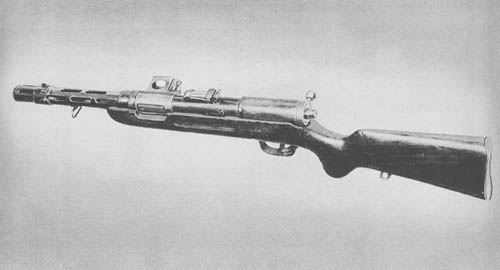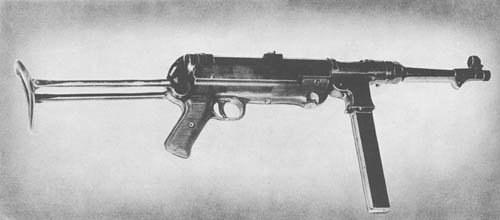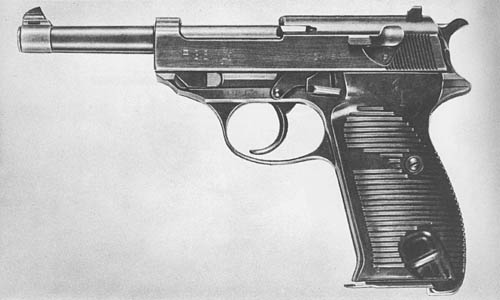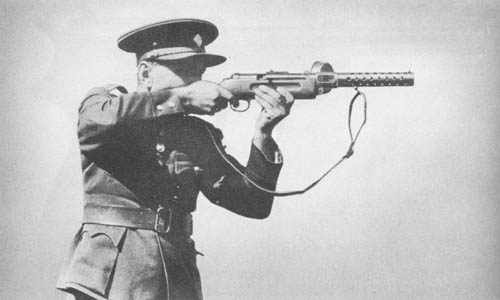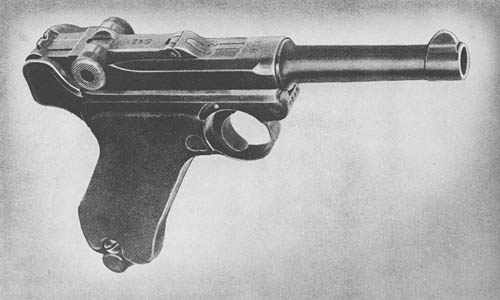
The German 9 mm Luger ’08 or Parabellum pistol, one of the official sidearms of the German army, is a semi-automatic weapon of unquestionable power and accuracy. Extensive tests have proved that the American .45 Colt automatic is superior because of greater shock effect.
Action of the Luger is based on the design of an American, Borchardt. The original Borchardt pistol utilized a recoil-operated mechanism with the breechblock locked to the barrel at the moment of discharge. The breechblock was unlocked by a toggle-joint action which was free to move after the breechblock and barrel had recoiled together for a short distance.
The pistol, which was heavy, clumsy, and badly balanced, was redesigned in 1900 and designated the Luger. The toggle-breech mechanism and retractor-spring housing of the Luger were much more compact than those of the Borchardt. The simpler 1908 model of the gun uses the German 9 mm Parabellum ball ammunition fed by an 8-round magazine fitted into the butt or grip. The bolt group indicates after firing whether a new cartridge has been inserted, in which case the extractor projects above the chamber showing the inscription “Geladen” (loaded) on the left side. There are two versions of the Luger, one with a short barrel, and the other with a long barrel and shoulder stock attachment. A 32-round drum magazine which enables a higher fire capacity may be used with either type, but the long barrel type with the shoulder stock and drum magazine has been replaced by the submachine gun in the current war.
SPECIFICATIONS
| Caliber | 9 mm (actually .347 in.) | |
| Weight | 30 oz. (1 lb., 14 oz. with empty magazine) | |
| Length | 8 3/4 ins. | |
| Length of barrel | 4 ins. | |
| Capacity | 8 rounds | |
| Action | Recoil—semi-automatic | |
| Range | 50 ft.—effective | |
| 150 yds.—maximum | ||
| Muzzle velocity | 1,075 f/s-1,250 f/s |
German: p. 202
